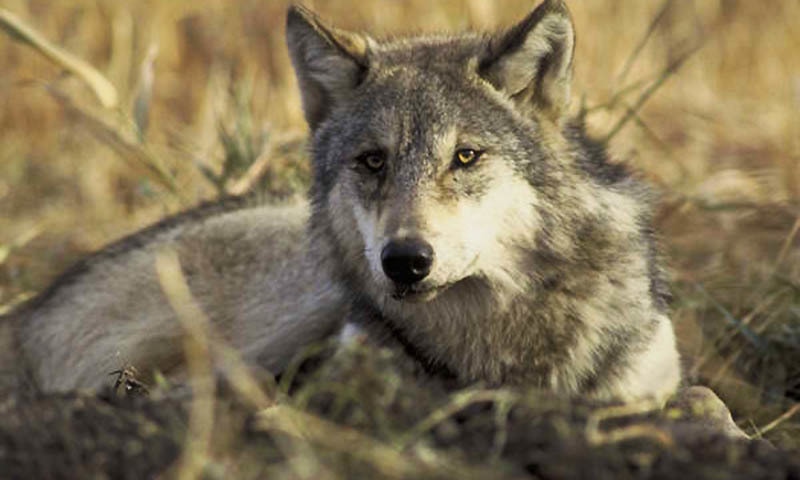Indian Wolf Faces Rapid Decline in Pakistan, IUCN Classifies Species as ‘Vulnerable’

Muhammad Javed Mushtaq :
The International Union for Conservation of Nature (IUCN) has, for the first time, carried out a dedicated scientific assessment of the Indian wolf (Canis lupus pallipes), classifying the species as Vulnerable. The study estimates a total population of 2,877 to 3,310 individuals across India and Pakistan, warning that without urgent, coordinated conservation measures, the Indian wolf may disappear from Pakistan’s landscapes.
Environmental expert Dr. Ghulam Sarwar, who has contributed to biodiversity initiatives in Pakistan and Gulf countries, shared that the assessment marks a critical milestone, as the species has been evaluated independently for the first time due to its unique genetic makeup and adaptation to semi-arid ecosystems. He added that only 12.4 percent of the wolf’s range lies within protected zones, underscoring the need for protection in non-protected habitats such as rangelands and scrublands.
The IUCN’s regional review, released on October 10, 2025, placed Canis lupus pallipes on its Red List of Threatened Species, citing a national population in Pakistan of only 269 to 290 mature individuals, averaging around 280, with approximately 42 breeding pairs.
Scientific information on this subspecies remains limited, but recent genomic studies have revealed that wolves in southern Punjab and Sindh represent a distinct evolutionary lineage. These small, genetically fragile populations are geographically isolated and require immediate conservation attention.
In Pakistan, sightings are sparse and fragmented. The species persists in pockets across southern Punjab’s Salt Range, degraded scrublands of Sindh, semi-arid zones of Balochistan, and fringes of Khyber Pakhtunkhwa. In many of these areas, wolves face conflict with herding communities, while northern mountain habitats are largely dominated by other wolf lineages.
The assessment identifies retaliatory killings following livestock attacks as the single most direct threat to wolf survival. Farmers often trap, poison, or shoot wolves after a depredation event. Other factors include habitat loss from expanding agriculture, infrastructure development, depletion of groundwater, disease transmission from domestic dogs, and declining populations of natural prey such as gazelles and hares.
Another growing concern is hybridization between wolves and free-roaming dogs, which can erode the genetic purity of the species. Researchers emphasize that the wolf’s plight is not only ecological but also socio-economic and cultural. In many rural areas, wolves are viewed as threats to livestock and livelihoods, resulting in a cycle of intolerance and persecution. Weak compensation schemes and the absence of livestock insurance have further aggravated the problem.
Wolves play a crucial role in maintaining ecological balance. As mid-sized predators, they help regulate herbivore and scavenger populations, remove diseased or weak animals, and influence vegetation growth. Their disappearance could trigger cascading effects, including overgrazing and loss of biodiversity across Pakistan’s rangelands.
Despite being legally protected under the Pakistan Wildlife Act and provincial laws in Punjab, Sindh, Balochistan, and Khyber Pakhtunkhwa, enforcement and coordinated conservation efforts remain weak. Experts stress that national-level planning, long-term population monitoring, and a science-based recovery strategy are urgently needed.
A proposed three-point plan calls for:
- Protecting and expanding key habitats and restoring wild prey populations.
- Reducing conflict through community engagement, improved livestock protection, and fair compensation.
- Monitoring genetics and population trends to prevent inbreeding and hybridization.
Successful examples from other regions—such as trained guardian dogs, predator-proof corrals, and community-led rapid response teams—could be adapted to Pakistan’s local context. Conservationists also urge authorities to improve data collection, camera trapping, and genetic sampling for evidence-based policy decisions.
Genomic research in recent years provides a framework for identifying priority areas and ecological corridors. However, without swift, coordinated action, Pakistan risks losing one of its most evolutionarily unique carnivores — a species that has quietly shaped its natural ecosystems for millennia.








